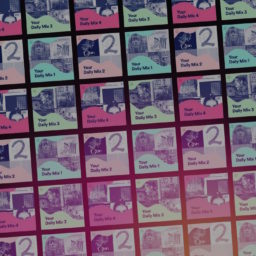Implementing the obvious missing feature could point to a new product direction for Spotify.
About a month ago, Spotify introduced Daily Mix, a new set of playlists that lets you ‘rediscover’ your favourite music. It mixes past favourites with tracks you might like and its stated aim is to take the work out of organizing daily listening.
For years, Spotify has focused on creating better ‘lean back experiences’ that allow for more passive listening. A music tech product’s typical early adopters are people that are heavily invested in the process, but as they achieve greater market penetration, they need to target new audiences.
At first, Spotify focused on human curation and it remains a strong focus. More recently, after the Echo Nest acquisition, Spotify has chosen to give algorithms more play, such as through Discover Weekly and Release Radar, and now Daily Mix.
The obvious missing feature from Daily Mix, and much requested, is the ability to download tracks to your device through an offline sync feature.

Their official explanation for it, frequent updates and large amounts of tracks, doesn’t really seem to add up. Many users offline sync large playlists that are regularly updated. If it’s an issue, then users just pick one or two favs of their Daily Mix playlists and sync them.
As I thought about it, it reminded me of what I envisioned Soundcloud’s future as a subscription service would be. Soundcloud’s current proposition of serving dead artists’ music alongside the brand, brand new for $10 / month, doesn’t make any sense and likely got forced upon them by labels taking a tough stand and impatient investors.
What I always thought Soundcloud would do, was simply to release an app that would allow users to offline sync their favourites and charge users about $2 to $4 a month. As Spotify’s reportedly in talks to acquire Soundcloud, perhaps Daily Mix can be their first step into launching more price points.
Let’s imagine Daily Mix as a spin-off.
New price point
Spotify’s in need of a new price point. On average, the monthly spend of Spotify’s new subscribers is $3.09, not $9.99. This is due to discounting. Spotify, and others, are having a difficult time bringing in the mainstream music consumer at $9.99 per month.

Spinning off Daily Mix as a separate product for the mainstream consumer could provide those users with a limited, but focused experience and monetize them without discounting.
The price point is a great way to onboard users. A user may use Spotify’s main app in ad-supported mode, but pay for Daily Mix. They’ll get used to having a monthly payment in music. Meanwhile, if they want to hear more by a certain artist in their Daily Mix, they can tap the artist name and be directed to the main Spotify app.
Inside Spotify’s main app, they can work to upsell users to higher price points for additional functionality.
Moving beyond all-you-can-eat (AYCE)
The original proposition of music services was that if you pay $9.99 a month, you’ll get all the music out there… However, with streaming holdouts and exclusives, this doesn’t seem viable. Due to the original frame, consumers are sometimes unwilling to spend more on digital music.
Music services need to shift away from having users associate their payments exclusively with the content, and instead monetize functionality around music.
Cannibalisation?
There remains the question of cannibalisation. Part of Spotify’s users who currently pay $9.99 / month may actually find that a Daily Mix app serves them well enough and subsequently downgrade. This makes an app like Daily Mix tough to license.
There are precedents though. Apps like MTV Trax let users download & listen to the most popular hits on a daily basis and in some markets, like Spain, they charge around $1 / week.

Alternatively, Spotify could wrap Daily Mix into some kind of trial, minimize functionality and hide the playlists to give it more of a radio feel, or work on the premium offer to be able to retain more premium subscribers, as well as upsell more effectively.
Another idea: expand Daily Mix with something not included in the main Spotify app, so that music aficionados can be convinced to spend some money on top of their $9.99.
Extra features for power users in $9.99
In a multi-app strategy, there are 3 things Spotify must do:
- Make sure user conversion funnels for each app are functioning;
- Make sure the lower tier apps don’t cannibalize the higher tier too much;
- Optimize upsell funnels across its products.
Spotify likely needs it current feature set with Discover Weekly, Release Radar, Daily Mix and other features in order to onboard and retain users. Also, they don’t want to piss off subscribers, so they need to come up with product propositions that differ enough from the scope of the current product.
Some examples of features that could be sold at extra cost:
- Buy Pacemaker and let Spotify create actual mixes for you;
- Playlist creation games, eg. with friends or well-known artists;
- Direct-to-artist subscriptions for exclusive content, interaction, discounts, etc. Think Apple Music Connect, done right.

They’ll have to figure out the specifics out soon and work out a plan on how to counter cannibalisation. As more mid-tier price point music subscription apps are entering the market, Spotify will need to compete.
Who would you rather lose a customer to? Someone else’s app, or your own?










